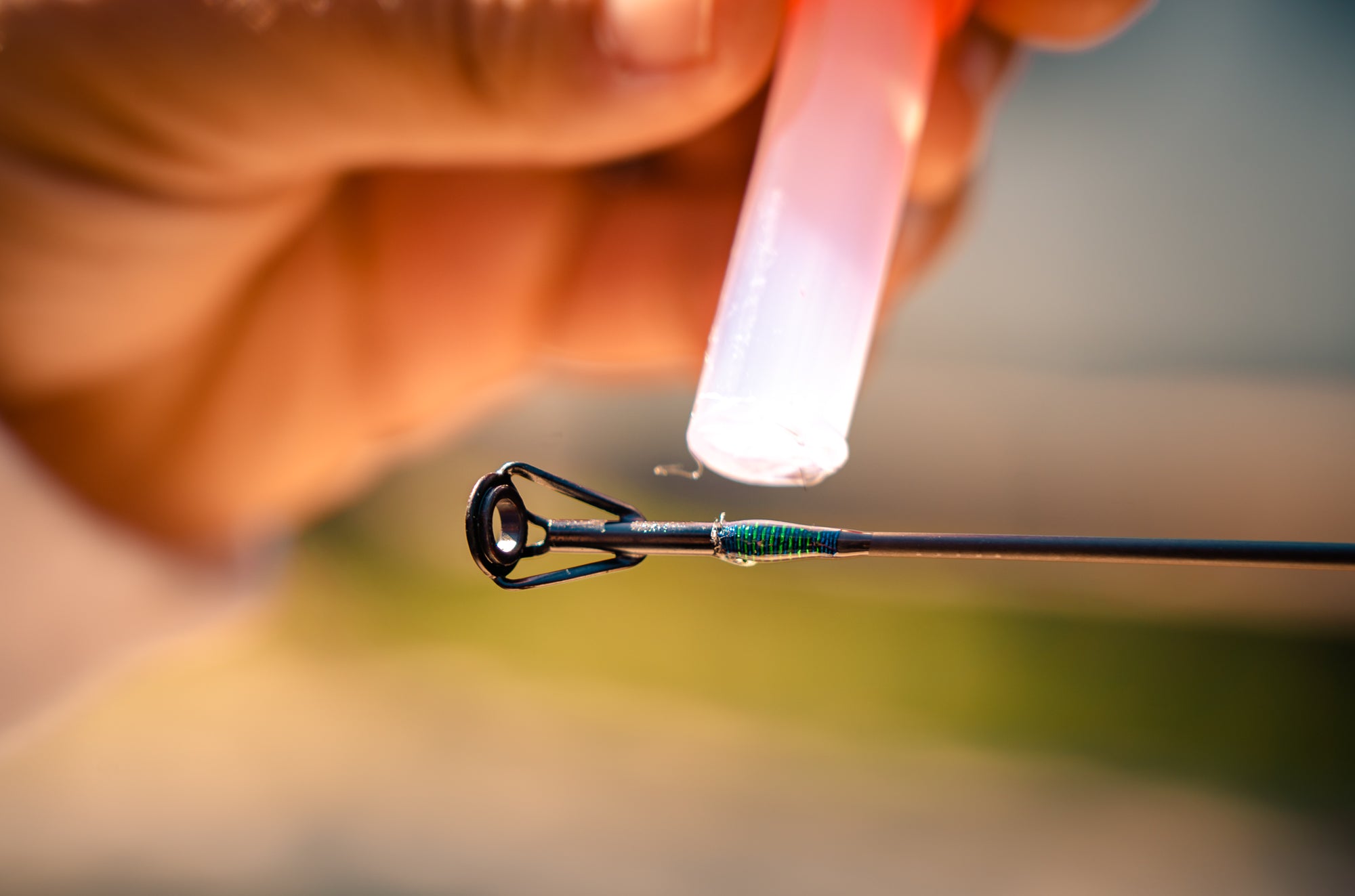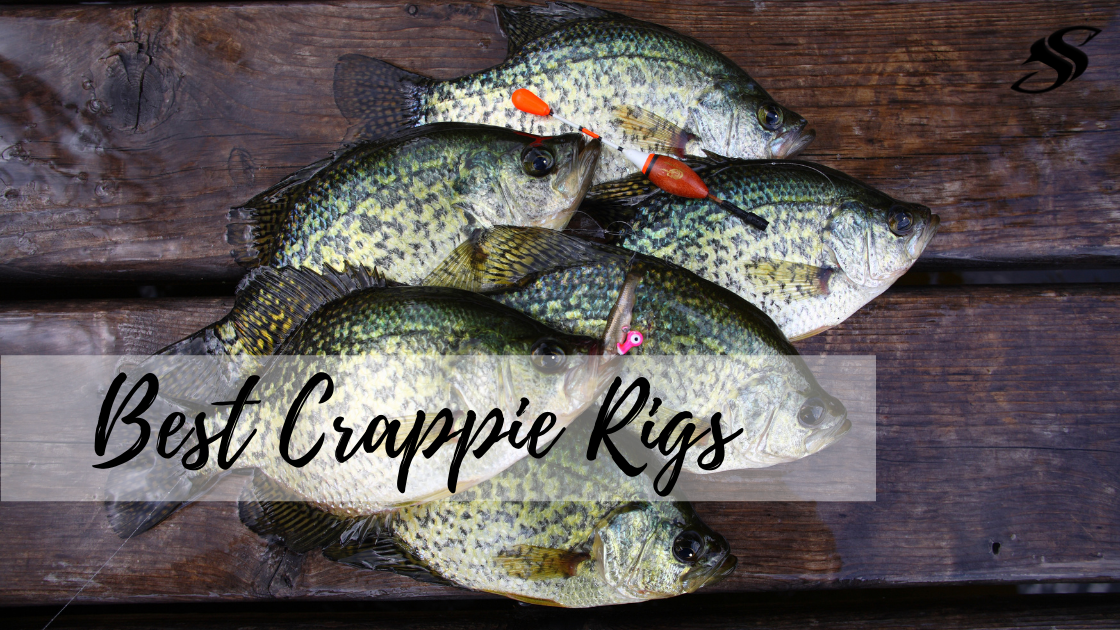
What if you have forgotten to pack your baitfish or need to catch more baitfish within a single day? These are the times when the knowledge of how to throw a cast net comes in handy. Throwing a cast net well is both about knowing how to set it up and the exact techniques of how to throw it the perfect way. It's also about practice. The more you practice with it, the more you get used to its weight, the impact of the wind speed and direction on the throw, and similar other factors that play a crucial role in its success.
A variety of cast nets are available in the market. They vary in their weight, mesh sizes, and other defining aspects of the product. Before moving into some of the most effective ways of throwing a cast net, we would look into these different types.
The Importance of Choosing the Right Cast Net Mesh Size
Cast nets come in different mesh sizes. It is vital to choose the right mesh size because, combined with the weight, the mesh size plays a crucial role in determining your net's sink rate. The sink rate ends up choosing the size of the baits you will catch. The largest mesh, for instance, ensures the fastest sink rate without damaging your bait.
- The ¼-inch mesh size serves perfect for small white baits that measure between 2 and 3 inches.
- The ⅜-inch mesh size is appropriate for baitfish that measure between 3 and 4 inches.
- For baits sized between 4 and 5 inches, you should go with the mesh size of ½-inch.
- If you are working with bait-sized 5 inches or larger, go for the ⅝-inch sized mesh.
- Experienced anglers prefer the ⅜-inch sized mesh as they offer maximum versatility.

The Weight of a Cast Net Matters, Here is Why!
Your cast net's weight becomes a significant factor when trying to catch specific baitfish such as pinfish or mullet. These are the species that hang near the bottom and try to get out at the very first instance possible. To prevent them from escaping the net, you must have a tight bottom seal. It is ideal for attaching the weight about 2.5 inches apart. However, there are several less-expensive introductory cast nets where weights are spaced as far as six inches away from each other.
Not only the weight itself but the sizes and shapes of the weight also play a crucial role.
- If you are using cast nets with mesh sizes less than 1¼-inch, you can go with cast nets that use a ball lead or a football shape.
- If you increase the size up to a 1½-inch mesh, it is better to use longer leads. The longer leads to ensure that they don't get caught up in the mesh.
If you are throwing your net in the grass a lot, it is better that you use smaller, round leads. The cast nets with smaller and round leads dig down well in the grass and ensure that you end up catching as much grass as bait as possible.
If you are looking for an optimal and versatile cast net, go for the ones that have a minimum of 1.5 pounds of weight per foot. That way, an eight-footer cast net will weigh a minimum of 12 pounds.
The Diversity in Cast Net Material
While mesh size and weights grab most of our attention while selecting the perfect cast net for our needs, we must not ignore the material's importance.
In the earlier days, the predominant material used to be natural-fiber cast nets that were made from linen and cotton. Then came the age of nylon.
Nowadays, there is an all-pervasive rage of mono nets. Monofilament nets have several advantages:
- A mono net does not absorb water. In the earlier days, the linen and cotton nets used to get soaked and gain a lot of weight. Fetching it up from the water was difficult.
- The nylon nets are also used to absorb water and increase in size. Additionally, these nets were white and easy for the fish to notice that they are coming. Apart from being lightweight, the mono cast nets are also transparent and are almost impossible for the fish to see.
Apart from the evolution from linen and cotton to nylon and then from nylon to monofilament, there hasn't been much change in other cast net material.
The Significance of the Cast Net Size
Cast nets and their throwing techniques mainly vary depending on the size of the net. Therefore, being sure about the exact net size that you can comfortably handle is immensely vital.
The size of a cast net is measured in feet. The measurement is taken from the horn to the lead line. It is crucial to remember that it will spread out to twice its quoted size once it opens into a circle. For instance, if you are using a 6-ft cast net, it will open into a ring that is 12 feet across.
While selecting the ideal size for your net, you must be sure of how much you want to catch and how fast you want to catch them. Indeed, the larger radius nets, the ones that are sized between 8 and 14 feet, will help you to capture more volume in less time.
But, simultaneously, it is also true that the larger the net, the more experience you need in throwing. Smaller-sized cast nets are relatively easier to throw, manage, and pull up. Many states have a set of regulations regarding the use of cast nets and which sizes are allowed. To be sure and also to ensure that you do not end up buying the wrong-sized net, consult your state's game and fishing regulations.
The Variety in Cast Net Construction
Apart from the mesh size, weight, and diameter, cast nets also vary in their construction. There are several types of cast nets as far as their construction is concerned. Some of the popular constructed designs include the six-panel design, the eight-panel design, and the bullseye design.
A pie panel cast net, for instance, is built by sewing triangular net panels together. This sort of construction allows the net to open fully and sink at a faster rate.
Then there are the bull's eye cast nets. Such nets are built by sewing the net's strips into concentric circles around the horn of the net. Each stitched circle gathers at the seam and creates an elliptical net.
Brands of Cast Nets
Cast nets are available in a wide variety, and several brands are popular among the angler community. We would discuss some such brands and the specialties of their nets.
Goture American Saltwater Fishing Cast Net for Bait Trap Fish: These cat nets are available in 4ft, 6ft, 8ft, 10ft, and 12ft radius. The mesh size is the most popular variety of ⅜-inch. It has a long floating braided poly hand line. The line is secured with a commercial-grade anodized swivel of 2 inches.
The net is handmade and comes with a copolymer monofilament mesh. The handmade qualities of the net make it softer and easier to throw. It lies flatter. It is capable of capturing baits in deeper water or current. It has a taped border with ¾-lb. of weight per radius foot. It is quick to sink and has a tight bottom seal to prevent the bait from escaping. It ensures a secure and robust closure on retrieval.
Another enticing aspect of this net is that it comes with a throwing aid belt and illustrated instructions.
Fitec Super Spreader Cast Net: Fitec's super spreader cast nets come in a wide variety of sizes ranging from 4-ft radius up to a radius of 9-ft. The mesh size is standard for every net size: ⅜-inches. Nets that are sized under eight ft come with free throwing aids. The weight of the lead per radius foot is ¾-inches. Its qualities include clear monofilament netting and test braille lines weighing 80lbs. It also has a 20ft long poly hand line and a triple-tied lead line. The Fitec super spreader cast nets work the best in shallow water or wherever you require a lightweight net. It sinks at a faster rate and is easy to cast. Each cast net includes a detailed instruction manual with the product.
Big Gulp 12ft Cast Net: Big Gulp nets are known for their quality handmade products that are made of soft and supple monofilament. They are known for their long-lasting quality and easy-to-throw features.
The 12ft net comes with the standard ⅜-inch mesh size. The weights are spread equally with 1.5 lbs of weight per foot. Construction-wise, the net has a six-panel built. The leads are marble-shaped and work well as far as faster sinking is concerned. The test braille lines weigh 100 lbs. It also has a double lead line and a 32 ft long hand line with a brass swivel. The product comes packed in a 3.5-gallon bucket with a lid and qualifies for free shipping.
Bait Buster Professional Grade Cast Net: The Bait Buster professional-grade cast nets come in the standard mesh size of ⅜-inches. In terms of the net radius, the available varieties are 5, 6, 7, 8, 9, 10, and 12-ft radius. The material is monofilament, and the lead weighs 1.5 lbs per foot. It has a poly braided hand line.
Betts 8 PM Old Salt Mono Cast Net: The package comes in dimensions of 6.5" X9.5" X6.75". The nets are of eight ft size and weigh 9 lbs. It is among one of the most popularly used cast nets in the industry. It comes in a reusable utility box with a detailed instructions manual.
The Triple Load Cast Net Throw For a 10Ft Cast Net
The Loading Process: The most crucial aspect of a successful throw is knowing how to have the proper hold. It is also known as the loading process. A good handle requires the knowledge of proper sectioning. Let us first start with the top section.
The Top Section Hold: For a proper top section hold, put all the rope in your left hand and loop it around your wrist. For a smaller hand, it is recommended that you make larger loops. The bigger the coils, the less you will have to hold in your hand.
Take the top of the net, also known as the horn, and put it in your left hand. Next, grab as far down as you can on the net, make a loop, and put it in your left hand.
Again make a loop by grabbing the net one more time at an approximate height of your waist level. Put it in your left hand.
Depending on your height, adjust the number of loops. If you are a relatively shorter person, grab the net three times. For a tall person, holding the net just twice is enough.
The Bottom Section Hold: For a proper hold on the bottom segment, take one-third of the net and bring it under your left elbow to eventually place it up on top of your left shoulder. The placing should be so smooth that the net rests on your shoulder with almost no effort.
Once you have placed it on your shoulder, take the lead line as close to you as possible and throw the net over your right shoulder.
With your right hand, now, section off the remaining half of the net. You can do this easily by slinging small units at a time over your right forearm.
Now, with your right hand, grab all the net sections that had been resting on your forearm.
Then, take your index finger and thumb and pinch the lead line along with the net in the final step. While doing this, your arm should be extended by your side.
Now that you have got a proper hold both over the top and bottom sections of the net, it is time to throw the net.
The Ideal Throw: For a perfect throw of the cast net, make sure you follow the following flow.
Make sure that you rotate the net to your left and then swing it backward. It helps to load the backswing.
Then, move your hands at the same rate. Start rolling from left to right, and make sure that your hips and shoulders also move accordingly to pack the maximum thrust possible.
Once you have managed to establish the forward momentum of the net and the lead line sections in your hand are swinging outward, you know that your castnet is ready to go. However, remember that you should still hold on to the single piece of the lead line you have been holding with your right thumb and index finger.
The final movement of the throw comes in the form of a quick pull of your right hand. This pull is required to spin that portion of the net that is the closest to you. In a perfect throw, this spin will draw a circle with the landing.
Throwing a 12-foot Cast Net
Given its size and weight, throwing a 12-foot cast net appears difficult to many anglers. But, it can become effortless if you follow some basic steps. It's true that only knowing the steps won't make you an expert. It helps if you continuously practice.
The two most vital aspects of throwing a 12-foot cast net are loading the net and casting motion. To excel in these two areas, all you need to do is learn the proper hold and throwing techniques. Additionally, it helps if you gather the knowledge of how to fix the potentially problematic areas.
The steps that you must follow are as follows:
- First, you should clear the net.
- Then you gather the rope and place it above your shoulders.
- Next, coil the net by adjusting the number of loops with your height.
- Set back the handhold and split the coiled net into two sections.
- Use your elbow to hold the split.
- Place the lead line over your shoulder.
- Set the handhold points to the front.
- Balance out both the front and back hold.
- Now, load the throw with a backswing motion of your body.
- Next, swing your net forward while twisting your body towards the target.
- Finally, release the net while holding the pinky section a bit longer.
Here is a video showing a simple way to throw a large cast net:
Throwing a Six or Eight Foot Cast Net Without Using Your Teeth
You can follow these steps if you think of throwing a cast net of six or eight feet from the shore or a boat or a Kayak without using your teeth to hold a lead line in your mouth.
Coil the rope by adjusting the number of loops according to your height.
Next, stretch the net. Stretching the net will ensure that the braille lines are free from twists and tangles.
Similarly, ensure that the lead line is free from any tangles.
Now, grab the net about one to one and a half feet down from the yoke.
Section the net into three segments.
With these three segments, create a loop keeping your thigh as the axis.
Now, grab one-third of the net, or one coiled section, precisely the opposite of where the rope is coiled, lay it in the opposite hand, and grip it.
Now, grab one lead firmly before you prepare for the final throw.
Load with a backswing, twist and throw the net with a spin.
After a few practices, you will realize that it is one of the easiest ways to throw a cast net without having to put a lead line in your mouth or draping the net over your shoulder.
Summary
By now, it is pretty evident that the perfect technique for throwing a cast net depends on the size. The larger the size, the faster the sink rate. A 10-ft long cast net is provenly more effective than a six ft one as far as the output is concerned. One can easily understand that throwing a 10-ft cast net would require more expertise and practice than six feet one. A 10-ft one will also weigh more and will be relatively difficult to secure a perfect closure while retrieving. It will also weigh more.
If you are a beginner, go with the smaller-sized nets. Nets that are six ft in radius, even 4-ft or 5-ft varieties, can also work. Once you have set your hand in throwing the smaller-sized nets perfectly, you can move upwards in the size chart.
It is also the throw that should be perfect; you should also perfect your hand in loading the net before it goes into the water. It would be best if you coiled them well, the number of loops is per your height, and the leads are placed perfectly over your shoulder. It takes time to perfect the skill. But, once you excel, nothing can surpass the excitement born out of an entire spread of a cast net on the water.




